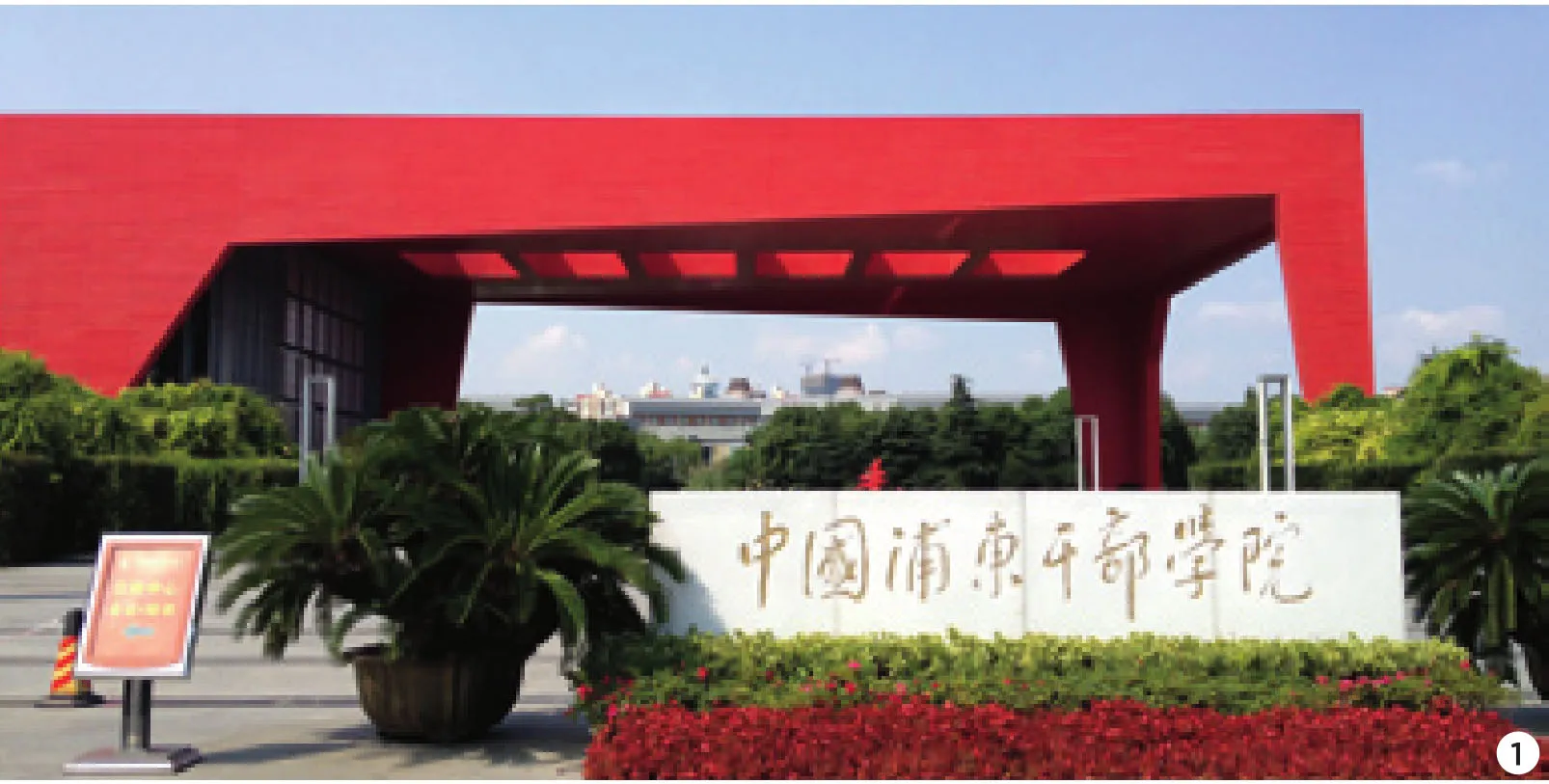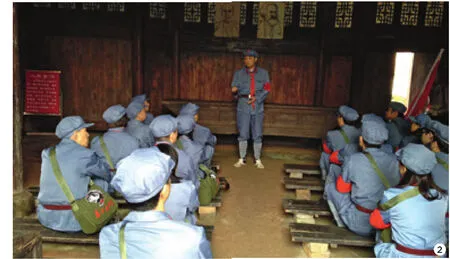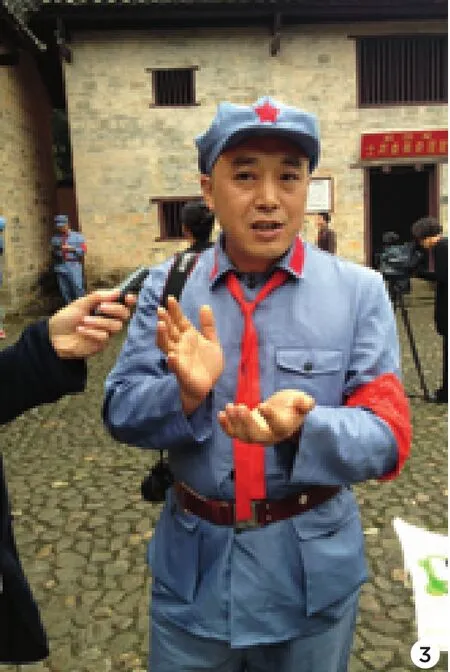All-around Training China explores different ways to train officials
2012-10-14ByYuanYuan
By Yuan Yuan
All-around Training China explores different ways to train officials
By Yuan Yuan
In September, Zhong Ming, deputy head of the Local Taxation Bureau of Beibei District in southwest China’s Chongqing, spent four engaged days in the China Executive Leadership Academy in Jinggangshan (CELAJ), central China’s Jiangxi Province.
The academy, located in a small town, is one of the three national education centers established by the Communist Party of China (CPC) to train cadres, on a variety of topics from history to modern technology. The other centers are located in Yan’an, Shaanxi Province, and Pudong, Shanghai. During his stay, Zhong, together with more than 30 other offcials from Chongqing, followed the zigzag pass to the top of the hills of Jinggangshan just as soldiers of the CPC-led Red Army did more than 80 years ago.
“The training is hard,” said Zhong, adding that many officials got sore ankles and legs after the long climb. “But it is worthwhile. We heard a lot about the diffcult days but it is different when you are right here to experience it. Actually, what we went through in these four days is nothing compared to what they suffered through.”
“It’s really touching when I hear about harsh conditions of the Party leaders in those days,” said Peng Wenyao, an official from the CPC Central Commission for Discipline Inspection. “I am proud of them for achieving so much.”
Passing down tradition
Jinggangshan is the frst CPC-led armed revolution base. In March 2005, the CELAJ was established.
“We aim to build up a base for stimulating the Party’s tradition in education and a furnace for the officials’ capabilities,” said Mei Liming, Executive Vice President of the academy, at a press conference on September 21.
Mei said that by the end of August 2012, the academy had held 789 training classes and hosted a total of 39,245 trainees. “It has become one of the new training bases for the Party and played a special role in the cadre training system in China,” he said.
There are altogether 87 old revolutionary sites and venues in Jinggangshan, which offer rich training resources. The trainees at the CELAJ are brought in to have classes on site focusing on the history of the CPC.
Yao Yuzhen, 30, has been working in the CELAJ for three years. A graduate of the Capital Normal University in Beijing with a Master’s degree, Yao found a job in Beijing but eventually quit and then joined the CELAJ. “My grandfather was a Red Army soldier and my father is a Party member,”Yao said. “My grandfather told me many stories about the revolutionary days and they made a big impression on me. I want to have a chance to tell those stories to others.” Yao is the youngest teacher at the CELAJ, where she teaches at the Xiaojing Cemetery of Red Army Martyrs.
“Her stories are so touching, I couldn’t help my tears,” said 40-year-old Wang Baohan, an official from the Department of Land and Resources of the southern island province of Hainan. “It is also very impressive to see people of the young generation like Yao make effort to pass down the tradition of the Party.”
Speaking on the signifcance of the training classes offered by the CELAJ, Wang said that although there are many modern trends of thoughts, the Jinggangshan spirit conceived in arduous struggle should always be cherished as a Party legacy. “In my opinion, the core of the Jinggangshan spirit is persistence,” Peng said. “As long as we persist in our faith and work hard, we will create miracles.”
A modern page
Compared with the CELAJ, the China Executive Leadership Academy Pudong (CELAP) in Shanghai follows a different training method. As China’s largest business hub, Shanghai has seen some of the fastest economic development in the country since China adopted the reform and opening-uppolicy in 1978. Trainees visit for the most upto-date knowledge of new technology and receive the training on diplomatic etiquette, emergency crisis solution and the ability to communicate with the media.

1. MODERN BASE: The China Executive Leadership Academy Pudong offers training classes on high and new technology, diplomatic etiquette, emergency crisis solutions and communicating with the media2. YESTERDAY ONCE MORE: Offcials from southern Hainan Province dressed like Red Army soldiers take a class in one of the old revolutionary sites in Jinggangshan, Jiangxi Province, on September 213. TRAINING TALK: Zhong Ming, an taxation offcial from southwest China’s Chongqing, tells journalists about his training at the China Executive Leadership Academy in Jinggangshan on September 21 (PHOTOS by yUAN yUAN)


The CELAP provides a range of programs tailored for intermediate and senior government officials, business executives and other senior professionals from home and abroad, according to Feng Jun, Executive Vice President of the CELAP.
“The CELAP has formed its own unique training approach,” Feng said. “It leverages the pioneering practices of the Yangtze River Delta in reform and opening up and resources of Shanghai as an international metropolis, giving trainees global perspectives and improving their governance capacity through training programs.”
Wang Shiquan, Director of Training Innovation and Cases Study Center at the CELAP, is in charge of training officials on communicating with the media. “It is of crucial importance because media outlets play a much bigger role in public affairs,” Wang said. “We use the word communicate because many offcials still have prejudice toward the media and refuse to talk to media representatives in many cases.”
With previous experience working at the English-languageShanghai Daily, Wang said that he is aware of the needs from both the media and officials. He noted there are problems that can be better solved if both sides properly engage. Wang uses a simulation training method. He turns the class into a live press conference with the offcials acting like journalists or a live talk show with the offcials answering questions from the host without preparation.
“It works pretty well,” said Wang. “Some offcials, after returning to their posts, called me and shared their successful experience in communicating with the media.”
In Li Min’s class, officials morph into students and are divided into small groups to discuss crisis management.
“China has entered an era where emergency incidents stack up. Dealing with emergencies is like solving math problems: No matter how many you’ve solved, the next one is always new,” said Lin, a professor at CELAP. “The ability to manage crisis is a must-learn skill for all offcials.”
Professor Song Lei joined the CELAP in 2009. “I mainly focus on smart cities. Three years ago, many officials had no idea what a smart city was and didn’t think it had anything to do with them,” Song said. “But things have changed a lot. They are very willing to learn and are more interested in working on this matter.”
As part of the training, Song brought offcials to Changzhou in Jiangsu Province, a mediumsized city that has moved forward in setting up a smart city system. “I want to show them that new technology is not as difficult as they thought,”said Huang. “On the contrary, it is much easier to be put into reality and it can signifcantly improve effciency.”
Besides offcials from China, some government officials from other countries also attend training at the CELAP.
“We have invited into our classrooms more than 400 political leaders, business executives and academic experts from more than 30 countries, including former British Prime Minister Gordon Brown and former World Bank President Robert Zoellick. We have successfully hosted more than 120 training programs for more than 3,000 foreign participants, including those for senior Australian and Russian public servants and chairs of the EU Chamber of Commerce,” said Chen at a press conference on September 24.
Tim Fraser, Executive Director of the Department of State Development of Government of Western Australia, attended a four-day training seminar at the CELAP in September with several co-workers. “The training is very useful and helpful to us, as Australia and China face pretty similar problems such as environmental protection and educational equality,” Fraser said. “We can learn a lot from China.”
yuanyuan@bjreview.com
